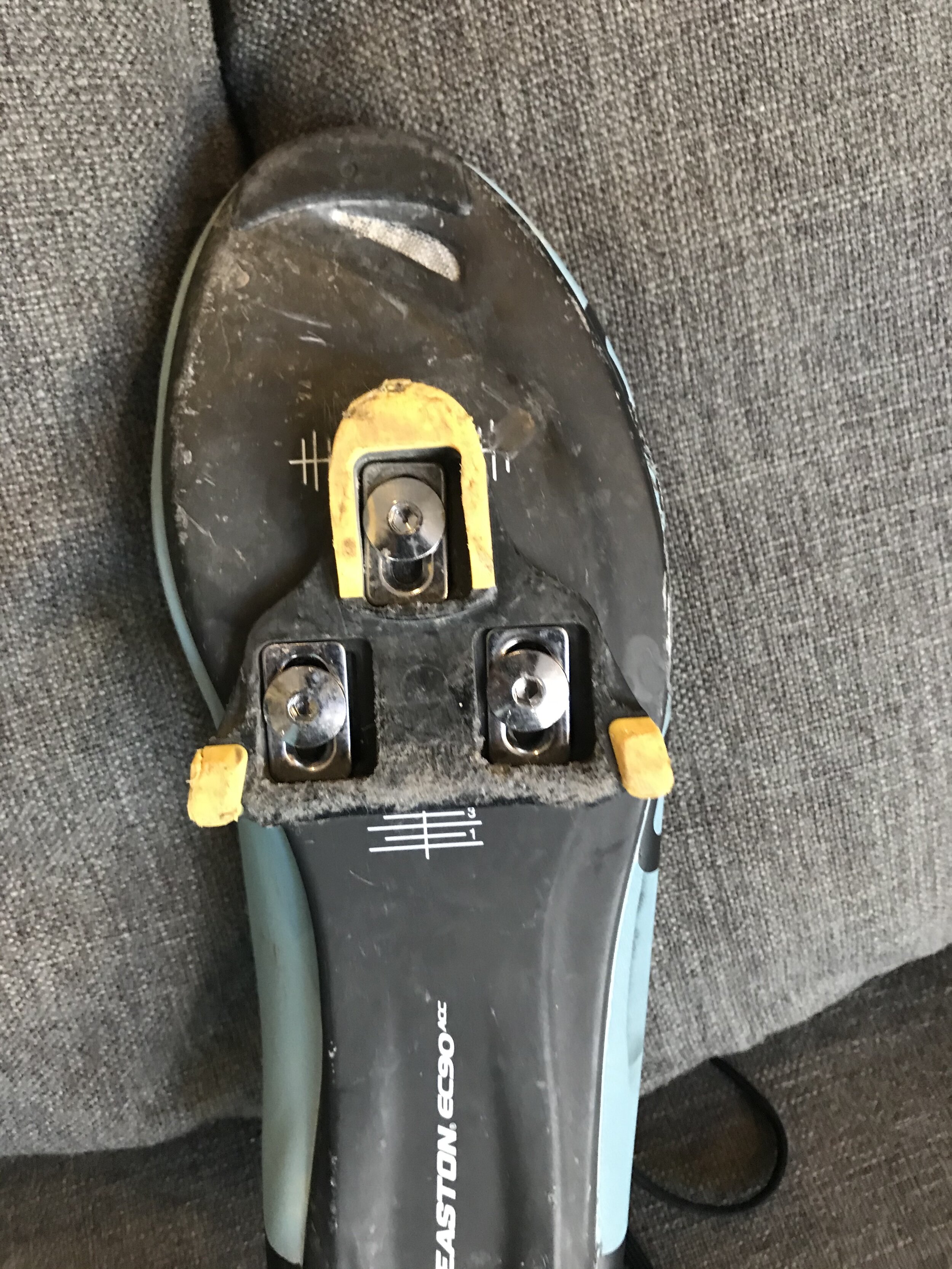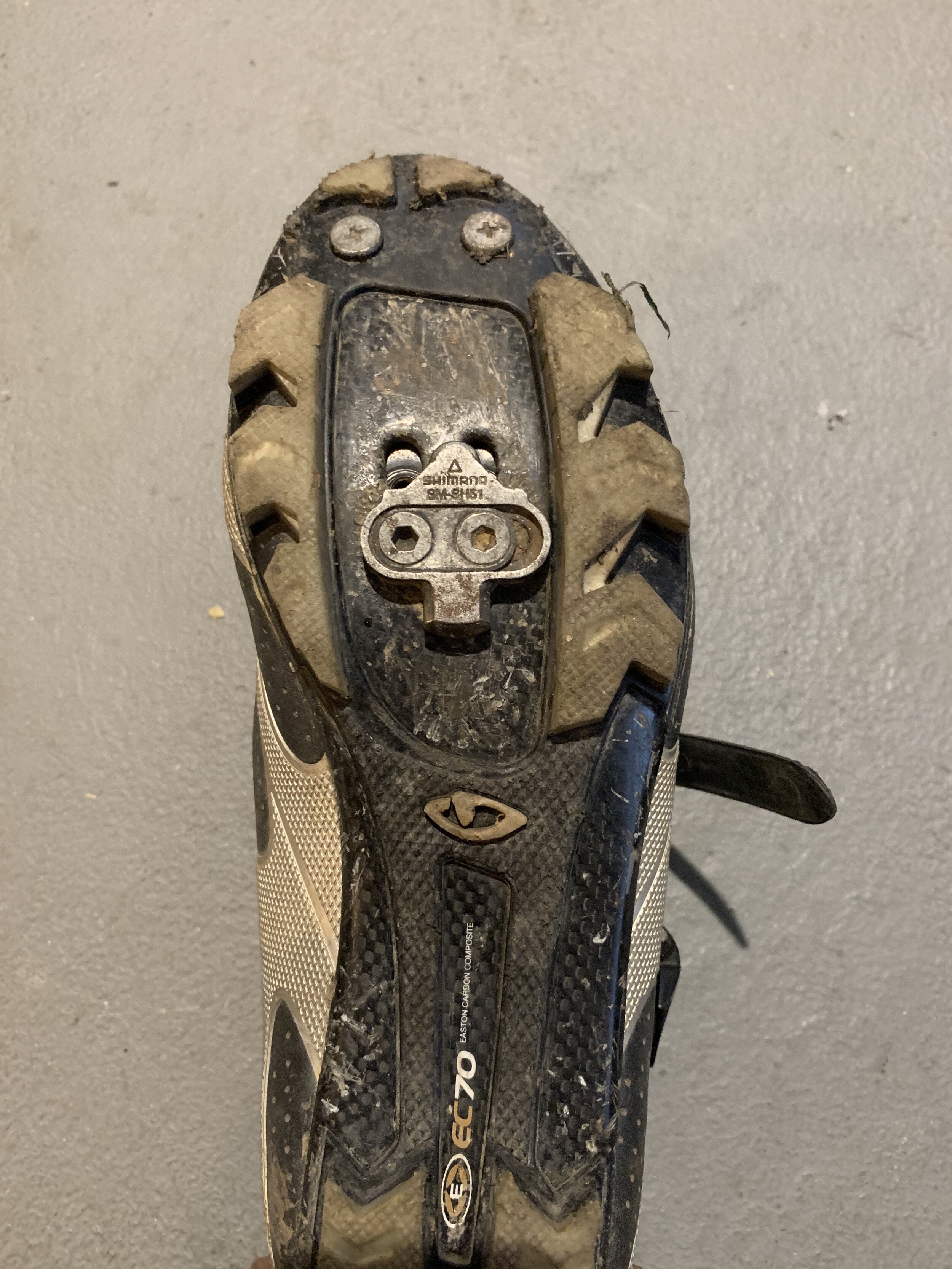Clipless 101
If you’re wondering what the deal is with “riding clipless” and what makes it a great choice for a lot of cyclists, wonder no more! This blog gives an overview of what clipless entails, the benefits of riding clipless, a description of the most common types of clipless pedals and shoes and how to choose the right style for you, and lastly, some key tips on how to get started. Please stop in with any questions or to see options in person, and when the time comes to pull the trigger, we carry the most popular styles (only women’s shoes, sorry fellas), and will set you up to practice in a trainer!
So, what is clipless?
“Clipless” is a type of bike pedals that attach to a cleat installed to the soles of cycling shoes, effectively locking your feet onto your bike pedals. To get started with a clipless system, you’ll need to select pedals and shoes. The pedals will need to be installed onto your bike (we can help!) and your cycling shoes will need cleats bolted to the bottom. The cleats are locked to the petals by stepping down on the pedal, and unlocked by twisting your heels to the outside of the bike-- the mechanism and motion is not that different to how downhill ski boots lock into skis. This motion and how to practice is described in more detail below.
This style is called “clipless” because the previous industry standard used clips and straps so it’s called clipless to differentiate between the two, even though you do still have to “clip in” with this system. Clipless has become more popular than toe-clips or straps because many find them safer and more efficient.
Why should I ride clipless?
There are several reasons clipless pedals are beneficial and you may want to make the switch. If you’re cycling short distances and riding casually, platform pedals work fine, but as you start to pedal longer distances or more seriously to achieve fitness or ride in a trainer, you’ll definitely take advantage of the benefits of clipless.
First, the main benefit of using clipless pedals and shoes is you get more leg muscles contributing to the pedal stroke, so you’re able to go farther and faster with the same effort. In addition to your leg muscles pushing down in the pedal stroke, since your feet are connected to the pedals, your leg muscles are also engaged with the upstroke. So not only the quads are working with the downstroke, but the hamstrings are working with the upstroke. That is a pretty simplistic description as it only includes the main leg muscles, but many more are involved too. Additionally, because your feet are attached to the pedals, you'll have greater power transfer with the downstroke as you pedal Another benefit of clipless systems is they give the rider more control over their bike and use their feet for maneuvers like hopping pavement cracks and bumps in the road.
Aside from speed and efficiency, clipless shoes are also designed for cycling and protect your feet. They are very rigid and will protect the nerves in your feet from getting pressed too much into flat pedals and going numb. This design also protects your arch, and keeps the balls of your feet firmly over the center of the pedals for good form.
Styles of Clipless Shoes and Pedals
You will need cycling shoes that are made to clip into clipless pedals, and there are multiple types of cycling shoes available to you! In addition to having cleats that attach to pedals, bike shoes and are built with stiffer soles to protect your feet and to send as much of your pedal power from your leg into your stroke as possible.
Road Shoe
To pick which style of shoes you’re looking for, you need to think about the riding you plan to do. If your rides are on a road bike and you want to maximize your speed and efficiency, road pedals and shoes may make the most sense. Road shoes are the most lightweight and have a larger pedal and cleat, which means there is more surface area between the pedal and shoe, which results in greater power transfer and making you faster and more efficient. A trade-off for greater power, is walkability. Road shoes have a smooth bottom with very little added material made for walking and cleat is not recessed but rather protrudes from the sole, making it hard to walk in.
Off-Road Shoe
If you want to be able to walk more comfortably in your cycling shoes, that is a big reason to choose off-road shoes as they have added material and recessed cleats making it much easier for walking. This is the reason people who do bike touring or use their bike for commuting choose the off-road style, as they are not as concerned about speed as walkability. In addition, people who ride cyclocross and mountain bikes and spend time riding on dirt, are better served with off-road shoes and pedals as it is easier and faster to unclip and the shoes provide much better traction than road shoes.
Aside from the two big categories, there are different retention styles and models that have differences in the comfort and durability. It’s important to try on bike shoes and make sure they have a good fit and the features that make the most sense for you. We’ll be happy to help you try on shoes and find the right fit so you can spend many hours comfortably pedaling away.
How to Get Started!
With a bit of practicing beforehand, you’ll be able to hit the road with confidence. To clip in to the pedal, line up the cleat with the pedal and push down and slightly forward until you hear and feel a click. This takes some practice but after you get the hang of it, it is quite easy. To unclip, you simply swing your heels outward, being sure to keep your foot parallel to the ground while you swing your heel outwards. It doesn’t take long for this motion to become second nature. You can practice this motion with your feet while standing with on foot clipped in, and the other on the ground, or with your bike in a trainer.
When you're feeling comfortable with the engage and release of the pedals, bike a short loop around a park or quiet side street and practice getting in and out of the pedals. If you’re nervous about falling over you can practice on grass, but remember that if you do fall, it will happen very slowly and it’s normal as you are learning! Remembering to swing your foot out from the bike is the most important thing, and you shouldn’t have a problem.
Any Questions?
Stop into our shop with any questions you have, or to chat about options! We can show you your different pedal options, install them for you or show you how, and put your bike in a trainer so you can practice using the clipless system.
If you’re looking to ride or train further, faster, or more efficiently, you’re a great candidate for a switch to a clipless system. Keep in mind, there are several models of pedals that are a normal platform on one side, and the other has the clipless We hope you learned a bit and feel excited about taking your riding up a step!



